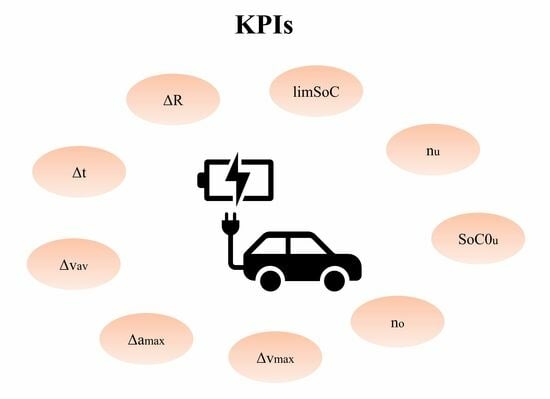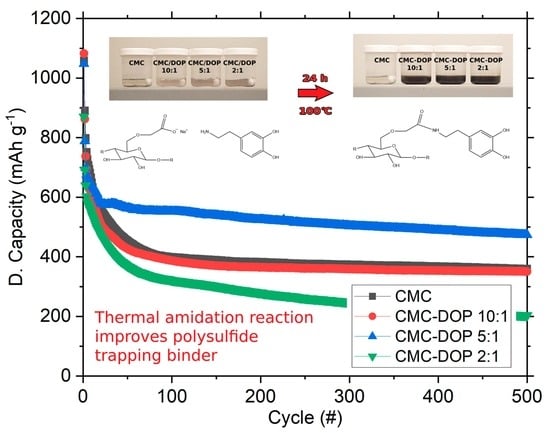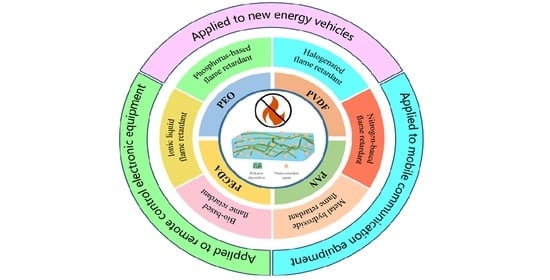Feature Papers in Batteries
A topical collection in Batteries (ISSN 2313-0105).
Viewed by 6358
Share This Topical Collection
Editors
 Prof. Dr. Pascal Venet
Prof. Dr. Pascal Venet
 Prof. Dr. Pascal Venet
Prof. Dr. Pascal Venet
E-Mail
Website
Guest Editor
Department of the Ampère Laboratory, Claude Bernard University Lyon 1, 69100 Villeurbanne, France
Interests: characterization; modeling; reliability; aging and diagnosis of electric energy storage system (batteries, supercapacitors, capacitors)
Special Issues, Collections and Topics in MDPI journals
 Prof. Dr. Seung-Wan Song
Prof. Dr. Seung-Wan Song
 Prof. Dr. Seung-Wan Song
Prof. Dr. Seung-Wan Song
E-Mail
Website1
Website2
Guest Editor
Department of Chemical Engineering & Applied Chemistry, Chungnam National University, Daejeon 34134, Republic of Korea
Interests: lithium-ion batteries; post-lithium (magnesium-ion, lithium-sulfur, aqueous) batteries; control and mechanistic studies of SEI stabilization and electrode-electrolyte interface processes; electrochemistry; solid-state chemistry; surface chemistry
Special Issues, Collections and Topics in MDPI journals
Topical Collection Information
Dear Colleagues,
We are delighted to invite you to contribute a research or review paper for this collection.
This Topical Collection entitled “Feature Papers in Batteries” will cover all topics related to batteries and electrical energy storage systems.
All electrochemical systems, such as lithium-ion, lead–acid, nickel–metal hydride, metal–air, and next-generation batteries or supercapacitors, are of interest. Papers can be related to applications, for example, portable, electric vehicles, stationary, or photovoltaic, or they can be independent of an application.
Topics of interest include, but are not limited to, the following:
- fundamental electrochemistry aspects;
- active and passive materials and components;
- in situ and ex situ material analysis;
- cell design, module, and pack technology;
- processing and manufacturing;
- battery applications;
- modeling and control;
- battery performance and testing;
- charging technologies;
- battery management system, monitoring, diagnostics, and prognosis;
- thermal management;
- hybrid battery systems;
- safety and reliability;
- mechanisms and modes of ageing and lifetime;
- costs and market.
Prof. Dr. Pascal Venet
Prof. Dr. Seung-Wan Song
Guest Editors
Manuscript Submission Information
Manuscripts should be submitted online at www.mdpi.com by registering and logging in to this website. Once you are registered, click here to go to the submission form. Manuscripts can be submitted until the deadline. All submissions that pass pre-check are peer-reviewed. Accepted papers will be published continuously in the journal (as soon as accepted) and will be listed together on the collection website. Research articles, review articles as well as short communications are invited. For planned papers, a title and short abstract (about 100 words) can be sent to the Editorial Office for announcement on this website.
Submitted manuscripts should not have been published previously, nor be under consideration for publication elsewhere (except conference proceedings papers). All manuscripts are thoroughly refereed through a single-blind peer-review process. A guide for authors and other relevant information for submission of manuscripts is available on the Instructions for Authors page. Batteries is an international peer-reviewed open access monthly journal published by MDPI.
Please visit the Instructions for Authors page before submitting a manuscript.
The Article Processing Charge (APC) for publication in this open access journal is 2700 CHF (Swiss Francs).
Submitted papers should be well formatted and use good English. Authors may use MDPI's
English editing service prior to publication or during author revisions.
Related Special Issue
Published Papers (4 papers)
Open AccessArticle
Battery Passports for Second-Life Batteries: An Experimental Assessment of Suitability for Mobile Applications
by
Marwan Hassini, Eduardo Redondo-Iglesias and Pascal Venet
Viewed by 227
Abstract
End-of-life electric vehicle (EV) batteries can be reused to reduce their environmental impact and economic costs. However, the growth of the second-life market is limited by the lack of information on the characteristics and performance of these batteries. As the volume of end-of-life
[...] Read more.
End-of-life electric vehicle (EV) batteries can be reused to reduce their environmental impact and economic costs. However, the growth of the second-life market is limited by the lack of information on the characteristics and performance of these batteries. As the volume of end-of-life EVs may exceed the amount of batteries needed for stationary applications, investigating the possibility of repurposing them in mobile applications is also necessary. This article presents an experimental test that can be used to collect the data necessary to fill a battery passport. The proposed procedure can facilitate the decision-making process regarding the suitability of a battery for reuse at the end of its first life. Once the battery passport has been completed, the performance and characteristics of the battery are compared with the requirements of several mobile applications. Mobile charging stations and forklift trucks were identified as relevant applications for the reuse of high-capacity prismatic cells. Finally, a definition of the state of health (SoH) is proposed to track the suitability of the battery during use in the second-life application considering not only the energy but also the power and efficiency of the battery. This SoH shows that even taking into account accelerated ageing data, a repurposed battery can have an extended life of 11 years at 25 °C. It has also been shown that energy fade is the most limiting performance factor for the lifetime and that cell-to-cell variation should be tracked as it has been shown to have a significant impact on the battery life.
Full article
►▼
Show Figures
Open AccessArticle
Quantifying the Impact of Battery Degradation in Electric Vehicle Driving through Key Performance Indicators
by
Maite Etxandi-Santolaya, Alba Mora-Pous, Lluc Canals Casals, Cristina Corchero and Josh Eichman
Viewed by 1415
Abstract
As the Electric Vehicle market grows, understanding the implications of battery degradation on the driving experience is key to fostering trust among users and improving End of Life estimations. This study analyses various road types, charging behaviours and Electric Vehicle models to evaluate
[...] Read more.
As the Electric Vehicle market grows, understanding the implications of battery degradation on the driving experience is key to fostering trust among users and improving End of Life estimations. This study analyses various road types, charging behaviours and Electric Vehicle models to evaluate the impact of degradation on the performance. Key indicators related to the speed, acceleration, driving times and regenerative capabilities are obtained for different degradation levels to quantify the performance decay. Results show that the impact is highly dependent on the road type and nominal battery capacity. Vehicles with long and medium ranges show a robust performance for common driving conditions. Short-range vehicles perform adequately in urban and rural road conditions, but on highways, speed and acceleration reductions of up to 6.7 km/h and 3.96 (km/h)/s have been observed. The results of this study suggest that degradation should not be a concern for standard driving conditions and mid- and long-range vehicles currently dominate the market. In addition, the results are used to define a functional End of Life criterion based on performance loss, beyond the oversimplified 70–80% State-of-Health threshold, which does not consider individual requirements.
Full article
►▼
Show Figures
Open AccessArticle
Polydopamine-Modified Carboxymethyl Cellulose as Advanced Polysulfide Trapping Binder
by
Daniel A. Gribble and Vilas G. Pol
Viewed by 1584
Abstract
The search for a high-energy-density alternative to lithium-ion batteries has led to great interest in the lithium sulfur battery (LSB). However, poor cycle lifetimes and coulombic efficiencies (CEs) due to detrimental lithium polysulfide (LiPS) shuttling has hindered its widespread adoption. To address this
[...] Read more.
The search for a high-energy-density alternative to lithium-ion batteries has led to great interest in the lithium sulfur battery (LSB). However, poor cycle lifetimes and coulombic efficiencies (CEs) due to detrimental lithium polysulfide (LiPS) shuttling has hindered its widespread adoption. To address this challenge, a modified sodium carboxymethyl cellulose (CMC) polymer with integrated dopamine moieties and polydopamine nanoparticles was created through a facile one-pot dopamine (DOP) amidation reaction to strengthen noncovalent interactions with LiPSs and mitigate the shuttling effect. The resulting CMC-DOP binder improved electrode wettability, adhesion, and electrochemical performance. Compared to LSBs with a standard CMC binder, CMC-DOP 5:1 (with a 5:1 weight ratio of CMC to dopamine precursor) improves the specific capacity at cycle 100 by 38% to 552 mAh g
−1 and CE from 96.8 to 98.9%. LSBs show good stability, even after 500 cycles. Post-mortem electrochemical impedance spectroscopy (EIS) and energy-dispersive spectroscopy (EDS) studies confirmed the effectiveness of the CMC-DOP in confining LiPS in the cathode. This simple but effective nature-inspired strategy promises to enhance the viability of LSBs without using harmful chemicals or adding excess bulk.
Full article
►▼
Show Figures
Open AccessReview
Recent Progress in Flame-Retardant Polymer Electrolytes for Solid-State Lithium Metal Batteries
by
Yubin Liao, Xijun Xu, Xiongwei Luo, Shaomin Ji, Jingwei Zhao, Jun Liu and Yanping Huo
Cited by 6 | Viewed by 1964
Abstract
Lithium-ion batteries (LIBs) have been widely applied in our daily life due to their high energy density, long cycle life, and lack of memory effect. However, the current commercialized LIBs still face the threat of flammable electrolytes and lithium dendrites. Solid-state electrolytes emerge
[...] Read more.
Lithium-ion batteries (LIBs) have been widely applied in our daily life due to their high energy density, long cycle life, and lack of memory effect. However, the current commercialized LIBs still face the threat of flammable electrolytes and lithium dendrites. Solid-state electrolytes emerge as an answer to suppress the growth of lithium dendrites and avoid the problem of electrolyte leakage. Among them, polymer electrolytes with excellent flexibility, light weight, easy processing, and good interfacial compatibility with electrodes are the most promising for practical applications. Nevertheless, most of the polymer electrolytes are flammable. It is urgent to develop flame-retardant solid polymer electrolytes. This review introduces the latest advances in emerging flame-retardant solid polymer electrolytes, including Polyethylene oxide (PEO), polyacrylonitrile (PAN), Poly (ethylene glycol) diacrylate (PEGDA), polyvinylidene fluoride (PVDF), and so on. The electrochemical properties, flame retardancy, and flame-retardant mechanisms of these polymer electrolytes with different flame retardants are systematically discussed. Finally, the future development of flame-retardant solid polymer electrolytes is pointed out. It is anticipated that this review will guide the development of flame-retardant polymer electrolytes for solid-state LIBs.
Full article
►▼
Show Figures
Planned Papers
The below list represents only planned manuscripts. Some of these
manuscripts have not been received by the Editorial Office yet. Papers
submitted to MDPI journals are subject to peer-review.
Title: Biomass-Derived Carbon Materials for Energy Storage devices
Authors: Inho Cho 1; Kwang Se Lee 1, 2, *
Affiliation: 1. Secondary Battery Convergence and Open sharing System, Kyungnam College of Information & Technology, 45 Jurye-ro, Sasang-gu, Busan 47011, South Korea;
2. Department of Chemical and Energy Engineering, Kyungnam College of Information & Technology, 45 Ju-rye-ro, Sasang-gu, Busan 47011, South Korea
Abstract: 1
Title: Effects of K and Fe ions Impurities in Vanadium Electrolytes on Electrode Activity and Electrolyte Regeneration Technology Establishment and Verification
Authors: Zhi-Yu Zhang 1; Hung-Hsieh Ku 2; Chin-Lung Hsieh 2; Cian-Tong Lu 3,*
Affiliation: 1. Department of Chemical Engineering, National United University, Miaoli, Taiwan, China;
2. Chemistry Division, National Atomic Research Institute, Atomic Energy Council, Executive Yuan, Taoyuan, Taiwan, China;
3. Department of Energy Engineering, National United University, Miaoli, Taiwan, China.
Abstract: 1
Title: Safety Aspects on Battery Integration for Stationary Applications
Authors: Minglong He; Daniel Chartouni; Daniel Landmann; Silvio Colombi
Affiliation: ABB Switzerland Ltd., Segelhofstrasse 1K, 5405 Baden-Daettwil, Switzerland
Abstract: 1
Title: Sustainability Development of Stationary Batteries: A Circular Economy Approach for Vanadium Flow Batteries
Authors: Nick Blume 1,2; Thomas Turek 2,3; Christine Minke 1,2,*
Affiliation: 1. Institute of Mineral and Waste Processing, Recycling and Circular Economy Systems, Clausthal University of Technology, 38678 Clausthal-Zellerfeld, Germany;
2. Research Center for Energy Storage Technologies, Clausthal University of Technology, 38678 Clausthal-Zellerfeld, Germany;
3. Institute of Chemical and Electrochemical Process Engineering, Clausthal University of Technology, 38678 Clausthal-Zellerfeld, Germany
Abstract: In the literature, the hierarchy of value retention strategies (R-strategies) is utilized to describe the impacts on various circular econonmy (CE) factors. However, this approach is not suitable for batteries, such as the Vanadium Flow Battery (VFB), due to its technical complexity. The present-ed model primarily focuses on VFBs, as a deep technical understanding was identified as a fun-damental prerequisite for a comprehensive CE analysis. Based on the R-strategies, a new model called the Dynamic Multi-Dimensional Value Retention Strategy Model (DDS) was developed ac-cordingly. The DDS divides the R-strategies into three dimensions, as changes in the studied object each have a unilateral influence on the underlying dimensions, and interactions among the vari-ous R-strategies within the dimensions were also observed. Moreover, the model enables the transparent and comprehensible examination of various CE objective factors. Through the model, future adjustments to CE for batteries can be analyzed and quantified. In particular, the analysis yielded new insights into individual end-of-life strategies, based on new findings regarding the VFB. Consequently, important new perspectives on the VFB are also illuminated. The model tends to be applicable to complex other technologies as well as simple product systems.










